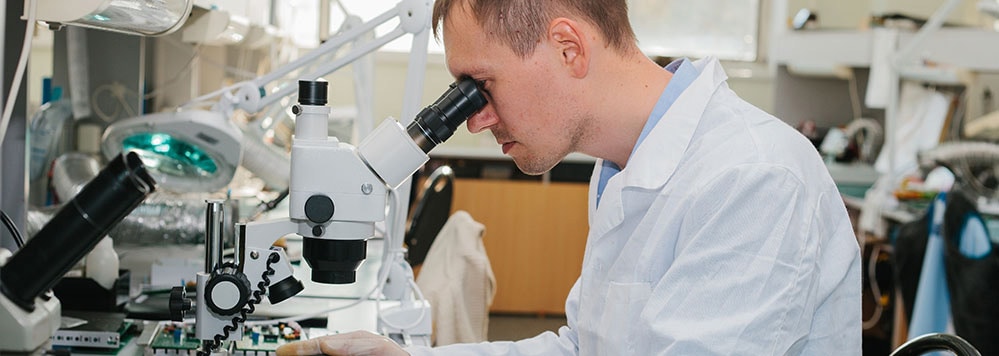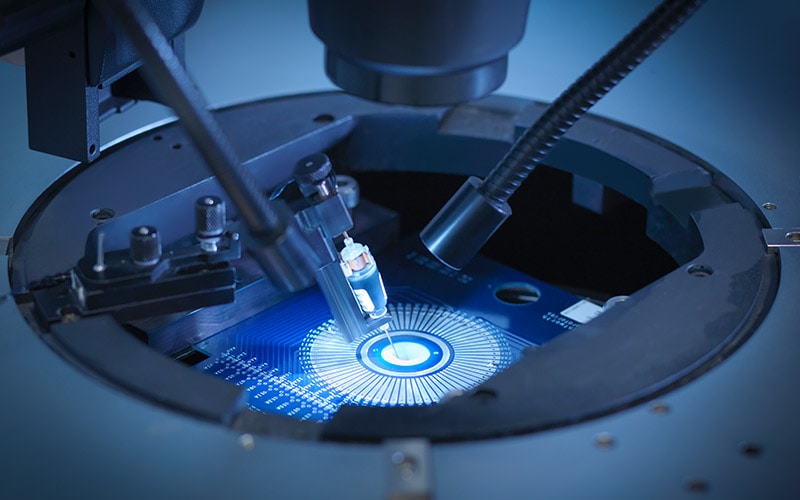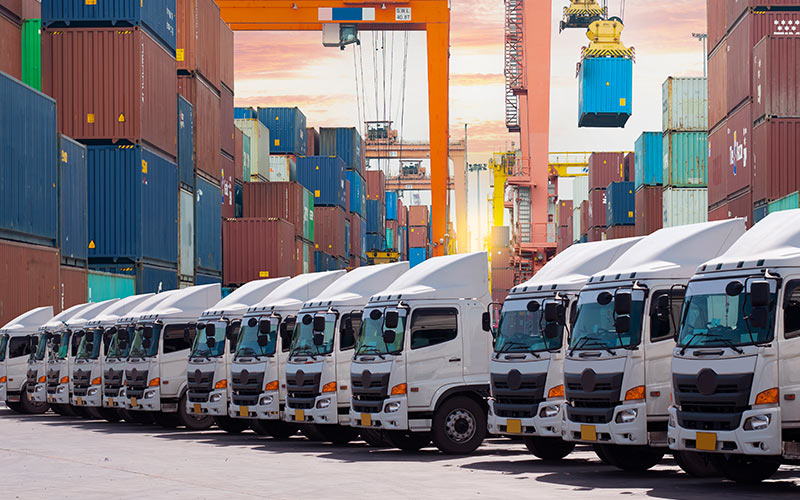Demand dynamics in the hi-tech sector have abruptly changed due to COVID-19.
On the one hand, many firms are buying up thousands of laptops and smart devices to ease the pressure on employees working from home. Similarly, the use of cloud software and infrastructure has spiked. Moody’s, the credit rating and research firm, says that AWS and Azure will continue to see “exceptional growth in their infrastructure offerings” 1, while newcomer software services such as Slack and Zoom have very quickly become household names.
Going forward, both business and retail consumers will find flexible consumption more and more attractive, giving them control over when and how to use products and services. The ability of hi-tech companies to quickly adjust operating models to manage this will be critical.
Meanwhile, pessimistic predictions for semiconductor revenue show a decline of 12%, with global disruption to economy and technology demand lasting up to a year. 2 McKinsey reports that most consumers expect their personal and household finances to be impacted until the end of the year, with the impact especially high in Asian countries. 3 iPhones and other gadgets will not be as necessary as other purchases. This all comes at a time when large 5G infrastructure investments are being put on hold and automobile manufacturers are seeing demand freeze up. U.S. car sales have dropped by over 39% year on year to around one million units, the lowest volume in over a decade. 4 This has the knock-on effect of pushing down prices of embedded systems such as GPS and telematics.
The hi-tech supply chain is also at risk. Infosys analysis shows a severe impact on the sector compared with a much rosier outlook for financial services industries with greater service assets. Much of this is due to a shift in focus to health supplies and the ongoing ramifications of social distancing, which increase lead times from factory to distributors to point of sale. Many firms are suffering, especially in Europe and the U.S., which are heavily reliant on Chinese OEMs. Total inventory can last just 40 days for many, compared with 320 days in the pharmaceuticals supply chain. 5 How demand and supply will recover is anyone’s guess. Economic recovery will not follow historical patterns, and its speed will largely be dependent on how social and commercial restrictions are lifted as well as consumer confidence once open.
Hi-tech firms were able to move fast and respond to early signs of the pandemic because of a close-knit relationship with China and East Asia
Yet within all this turbulence, there is a ray of sunshine peeping through. Overall, technology companies have been far more resilient than those in leisure, finance and air travel. The S&P 500 is just 16% off its all-time high, buoyed up by steady secular-growth stocks in technology, health care and consumer staples. 6 Because of their close-knit relationships with manufacturing operations in China and East Asia, hi-tech firms were able to move fast and respond to early signs of the pandemic with collaboration tools and laptops for their workforce. On March 4, with only 12 known COVID-19 fatalities across the nation and no diagnoses among Microsoft workers, the company told employees to stay home if they could. 7
Many consumers now see high technology as a savior. Google and Apple have partnered on Bluetooth contact tracing technology to help governments and health agencies reduce the spread of the virus, with user privacy and security central to the design. 8 Netflix has become as much a household essential in the COVID-19 age as Clorox. Its market value, at more than $190 billion, is now greater than Disney’s, with subscriber numbers soaring to 183 million. 9 Lyft has risen to the challenge by launching a food and medical supply delivery service through their network, while many now essential independent software vendors (ISVs) are lifting paywalls for their cloud products. Microsoft, for instance, is offering a premium version of Teams free for six months.
A tough pill to swallow
So things are both good and bad at the same time, for different reasons and for different hi-tech segments. STMicroelectronics, a French firm, has completely reorganized front-end and back-end processes, affecting up to 50% of its staff. 10 Chinese manufacturers in high demand are retooling production systems and securing additional workforce capacity. Many forward-thinking tech titans have made empathy their mantra, reasoning that helping their workforce safely through this initial period will pay massive dividends with regulators, the government and consumers as well as gain employee satisfaction and loyalty.
Many other ISVs are making educated guesses on where to put their money and where to cut costs. Most discretionary programs will be put on hold until autumn at the earliest. What is certain, however, is that the imperative for hi-tech firms is to remain relevant, resilient and ahead of the curve.
Working from home presents both an opportunity and numerous challenges. ISVs can sell more remote tools and software but will have to manage the increased demands on their contact centers as new business users grapple with subscriptions and integration issues. AI solutions could help here; LivePerson, a leader in conversational commerce, could work with cloud providers to package their offering on the fly for SMBs in the sector. The growth of work-from-home enablers such as Microsoft Teams, Slack and Zoom suggests other partnering opportunities for big and small ISVs alike, but what should these look like?
Then there’s the problem of what to sell short and long term, and how. For smaller vendors, and even titans such as Apple and Google, the traditional way of releasing and marketing software and hardware features has dried up. For the time being, generating buzz through annual conferences and face-to-face sales is no longer possible. SAP and Oracle have cancelled their roadshows, the normal course to generate leads and foster demand.
ISVs should work with cloud providers to package their offerings on the fly for SMBs in the sector
Less-well-known firms will have to reevaluate product feature schedules and marketing techniques. They will need to become more agile and more digital and get close to the ground on which client segments to target. And they must do it with speed. Dependence on marketing automation tools to understand the behavior of customers will become more pervasive. This trend will accelerate as customer touch points become more virtual in nature and physical interactions drop. At the same time, businesses must provide a superior customer experience during these short-duration, virtual interactions.
A new way of working
To do this, hi-tech firms will necessarily need to be more agile and responsive to employee and customer demand. Companies will be measured not on the downward impact of the pandemic but on the quality of their recovery once business reopens. Product innovation centers can be set up to build new capabilities on the fly with blue-sky go-to-market strategies. Big tech firms will be the new utilities — and will provide the platforms for smaller tech firms to buy and sell data, much like the Amazon marketplace. IoT and tech ecosystems will rise in relevance as traditional business models are flipped on their heads. Firms must also look for new ways to use lucrative data scientists, both to monetize data and to bring together wider tech communities for topline impact.
With ever-shifting market dynamics, smaller ISVs with shares in the collaboration and communication market, and even those in networking and storage, should rapidly develop new product features and bundle them under competitive commercial packages. This will give them an opportunity to cross-sell and upsell flagship software while supporting their clients’ CapEx and Opex needs. To do this, ISVs need to make changes across product hierarchies, price-quoting systems and billing. New product road maps should be put in place, and the potential risks of partnering with security-lax vendors worked out up front.
Hi-tech firms will be measured on the quality of their recovery once business reopens
Importantly, with many of the bigger players looking to increase customer and regulatory sentiment, the pandemic is an opportunity to build brand share and inspire trust. The Google/Apple alliance is a step in this direction, as is Lyft’s effort to offer supplies to medical professionals. Other ISVs should follow suit and look to use money ethically and in support of the quick recovery of society and the economy from this global challenge.
Employee welfare and organizational sentience
As always, and particularly now, hi-tech firms must focus on employee welfare. Hardware and ergonomics to support remote work will become even more important. Underlying systems and processes will need to become more responsive, and AI chatbots utilized to guide employee decision making. Human Resources departments will need to work with the board to ensure staff communication is curated, up-to-date and relevant to each working week. Google Cloud recently launched a chatbot for just this purpose. 11
Perhaps the zenith for any company in the future will be what we term a “live enterprise.” Here, ISVs can sense market conditions at a micro level and respond to client pain points with the right features, functions and commercial packages in the product portfolio. They can also help the workforce be more productive during what will continue to be a difficult time. However, getting there isn’t easy. Most hi-tech firms haven’t connected business operations, applications, infrastructure services and cybersecurity, but a live enterprise is necessarily connected. Investments need to be made to reimagine the experience across the ecosystem, embedding AI into the enterprise core and enabling fluid operating models to facilitate seamless agile working.
The hi-tech workforce of the future will continuously collect, observe, sense, analyze, act on and measure incoming data and knowledge. “Life can only be understood backwards … but it must be lived forwards,” said Soren Kierkegaard, the great Danish philosopher. ISVs must now put all their effort into understanding these past three months as quickly as possible, and make the right investments in people, process and technology to shore up customer sentiment, inspire the workforce and innovate at the speed of data.
References
- Cloud strength positions Microsoft and Amazon for growth despite IT budget delays, analysts say, Todd Bishop, April 14, 2020, Geek Wire
- POV on Supply Chain, COVID-19 Scenario, April 2020, Infosys MFGDCG
- Survey: Asian consumer sentiment during the COVID-19 crisis, Johnny Ho, Aimee Kim and Naomi Yamakawa, April 2020, McKinsey
- Weekly Update: COVID-19 Impact On Global Automotive Industry, Aman Madhok, April 28, 2020, Counterpoint
- POV on Supply Chain, COVID-19 Scenario, April 2020, Infosys MFGDCG
- Making sense of a stock market just 16% off its high while a pandemic costs 26 million jobs, Michael Santoli, April 25, 2020, CNBC
- Seattle’s leaders let scientists take the lead. New York’s did not, Charles Duhigg, April 26, 2020, The New Yorker
- Apple and Google partner on COVID-19 contact tracing technology, April 10, 2020, Apple Newsroom
- Netflix will remain a blockbuster hit beyond the covid-19 era, April 23, 2020, The Economist
- EU Chip Makers Weigh Production Risks Amid Covid-19, Anne-Françoise Pelé, March 26, 2020, EPS News
- Google cloud launches new AI chatbot for COVID-19 information, Teena Maddox, April 8, 2020, Tech Republic




